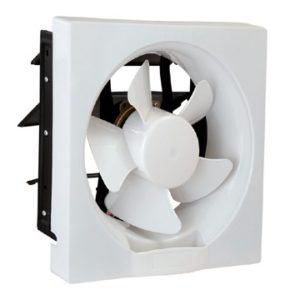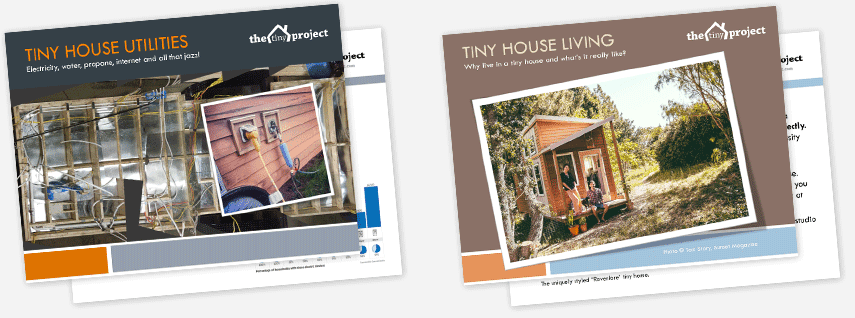Tiny House Moisture Control
In planning my tiny house, another issue I am facing is how to deal with moisture control. The biggest moisture source will be hot showers, but cooking (especially with a propane stove) can also add moisture to the air in the house. Not knowing where my final destination/climate will be, I need to make precautions to avoid future mold/mildew problems.
 In the mild seasons I can prevent too much moisture build-up by simply cracking a window or two (always a good idea when cooking with propane, anyway). I plan to get as much light and air into the house as possible—to make living in such a small space more sustainable for me—so it's really only the winter in which I can see having a problem. I don't see myself enjoying exiting a hot shower to an open window with freezing cod air blowing in.
In the mild seasons I can prevent too much moisture build-up by simply cracking a window or two (always a good idea when cooking with propane, anyway). I plan to get as much light and air into the house as possible—to make living in such a small space more sustainable for me—so it's really only the winter in which I can see having a problem. I don't see myself enjoying exiting a hot shower to an open window with freezing cod air blowing in.
An obvious option is to install an exhaust fan in the bathroom, to be used whenever showering. This is fine except for the added electricity usage (not a huge deal now, but later on I do plan to convert the house for off-grid use), and it requires another hole in an exterior wall, thus more work to install, and a less air-tight, less efficient envelope.
How do you control moisture in your tiny house?
Do you use an exhaust fan in the bathroom or kitchen? What other options are there for moisture control and ventilation, especially during very hot or cold weather?
Any recommendations for a very efficient, quiet exhaust fan?



I'm asking myself exactly the same questions at the moment.
I live in Canada and currently heat my unfinished Tiny house with propane and I have LOTS of moisture because of that this winter...
I was thinking about the exhaust fans, but I live off-grid and don't know if I can sustain the electrical consumption (same thing with dehumidifier).
For the moment, I crack 1-2 windows and take a sponge and towel each morning to drain excessive water on the interior surface of my (12!) windows, but it's really a less than stellar compromise...
I would love to read an efficient off-grid alternative!
Thank you,
Erik
Hi there, there is a way to get the air rid of some moisture, though not all of it and that's to use a dehumidifier little box thing which name I don't actually know. They look like this: https://www.google.com/search?q=dehumidifier+boxes&tbm=isch&tbo=u&source=univ&sa=X&ved=0CDoQsARqFQoTCLTV3dz3h8YCFTII2wodOw8A2g&biw=1366&bih=631 and you can get them pretty much everywhere, they use no power so that's a big plus if you're living off grid , I tried to use one in my home and they do work, not as well as an actual dehumidifier or a fan but for the price and no power need they're pretty good.
Hi Erik,
I empathize! I have been in a similar situation living in my 27' class C RV for the past several years. My sole source of heat is my Camco Wave 8 catalytic propane heater. I love the heat it cranks out but the moisture from the propane is definitely something that needs to be tended to on a regular basis. Yes, two windows should be cracked a bit to help but in addition I've found what helps me most is a circulating fan (as opposed to an exhaust fan). I think it could work for a tiny house. They make decent size units that run off 12v. I have two, each at opposite ends of the coach... not too bad of a draw on the battery, in my situation anyway.
I think an all of the above approach is called for here, and if it means using more power, figure out how to produce the electricity you need when you're off the grid. A small wind turbine might be an easy solution; my father produced all the electricity he needed for a small house in Nicaragua with one, small turbine, and my neighbor made some very effective turbines for pennies using recycled car alternators and 4" PVC pipe.
Open windows when it's warm out, and use an exhaust fan and a dehumidifier when it's cold. Use an oven hood when you cook, and in the summer, cook outside as much as possible, which in my opinion is more enjoyable anyway. Consider an outdoor shower as well -- there's something very peaceful about bathing under the stars, even when it's cold out.
Aside from the obvious concerns of rot destroying your home and mold ruining your air quality, changes in your humidity level will cause the wood in your home to expand and contract, so keeping humidity as stable as possible is advisable. In the worst cases, your doors and windows will stick, cabinets won't close properly, cabinet doors will fall apart, floorboards and wall and ceiling cladding will warp and buckle, and cracks will form in any wide pieces of wood you have. Some of this can be addressed by how you finish the wood, and some of it is unavoidable, but controlling humidity is worth the effort and expense. You can also find tables online that show how much different species of wood can expand due to humidity changes, relative to the width of a board, so this is helpful when choosing the wood you use. Be aware of differences between sapwood and heartwood as well, and pay attention to the grain to help avoid cupping -- I found some very nice cedar siding that came shrink wrapped, and within a day of removing the wrapper it all cupped in our ambient humidity.
As far as having a few extra holes in the envelope, in a tiny house, you're more likely to have the issue of not enough ventilation as opposed to too much. The extra time on install is a non-issue -- spend a little extra time now and save yourself a lot of time later replacing rotted wood, trying to get rid of mold, and still having to install the exhaust fan and dehumidifier. Do your installations right and you're not likely to have any problems. Better to have the tools and not use them than to need them and not have them.
Another issue is the way your home is constructed to allow moisture to leave through the walls, floor, and ceiling. I have seen a lot of tiny house builders so concerned with keeping water from penetrating their floors while under tow that they fail to consider what will happen when water is spilled inside the home or there is a plumbing leak. These aren't RVs, in spite of how they may or may not be licensed, so while the behavior of the building materials while traveling down the highway is important, what happens during the vast majority of the time, when the home is parked, is far more critical. Things like the right moisture barriers, an air gap behind your siding, and under your roofing if you're using wood shingles or metal, will play an important role in allowing moisture to leave the home without letting it enter. And of course making sure your windows, doors, and roof are flashed properly is important, as is considering the prevailing wind direction when setting up the home. Where I live, the prevailing wind blows north, so none of the structures on my site have any doors or windows on their south walls. Designing the home with one such wall, and if you're using shingles on the roof, installing the ridge cap so that they overlap in the appropriate direction, is one more way to aid in controlling moisture.
Apologies if any of this is discussed at length elsewhere in your blog. I guess my point is that you need a whole home approach to moisture control. As a builder in the temperate rainforest in Washington state, I'm a bit obsessed with this subject -- kind of have to be.
Solar powered roof vent fan. AND small fan on the ground to circulate air.
A Fan in the bathroom would only be used sparingly and can also be a solar powered fan on the wall.
I would also use a some kind of exhaust above the stove. This is the biggest source of moisture in my tiny house. Cooking 2 meals a day on the stove produces a lot of moisture. If you need to up your power storage to be able to have these systems working it would save you problems with mold, kitchen odors and hyper expansion and contraction of wood and framing in the house.
Two words: Kitty Litter.
All of the above solutions are excellent but if you want a cheap, power-free solution, kitty litter works well. Fill a tube sock with the most absorbent kind you can find and you can store it nearly anywhere.
Also, buy one of those solar-powered lithium ion batteries that charges USB devices (wish.com has cheap ones) and plug in a USB fan. Clip the fan on something and point it at the moist area.
Hey Erik,
I’m living in a tiny house in swampy Netherlands. I found a bunch of computer fans drawing a measly 0.049 amps and wired them up.
Keeping the air moving (so it doesn’t settle and condense) seems so far to be a great way of reducing the moisture problem. I fan behind the curtains, under the kitchen unit and in corners that attract mould.
Hope this helps!!